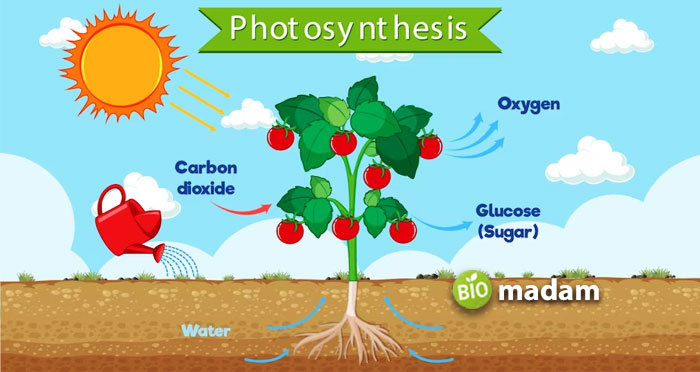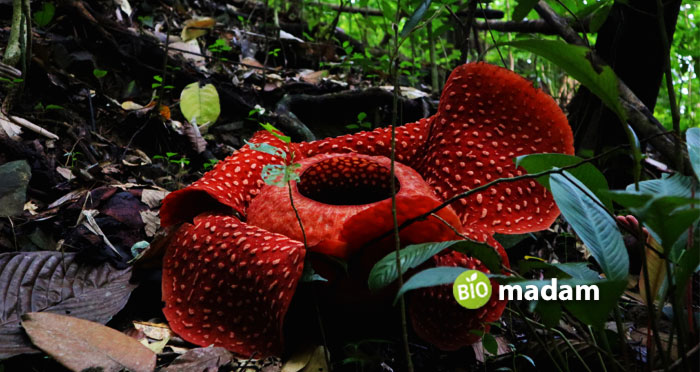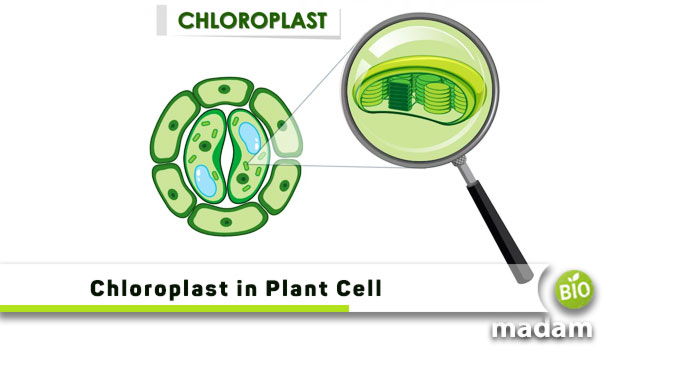While animals and plant cells have many similar components, plants have a few unique organelles that contribute to their autotrophic nature; plastids are one of those organelles. Chloroplasts are a type of plastids in plant cells critical to photosynthesis. The main function of chloroplasts in plants is converting light energy to chemical energy during photosynthesis. Keep reading to know all about the function of chloroplast in photosynthesis.
What are Chloroplasts?
Chloroplasts are green-colored, chlorophyll-containing plastids that contribute to photosynthesis. All green plants and algae that manufacture their food have chloroplasts.
These organelles are believed to have evolved from a free-living photosynthetic cyanobacterium engulfed by a eukaryotic cell. The mesophyll cells in the leaves of plants contain chloroplasts to trap sunlight for food production through photosynthesis. These organelles have their extra-nuclear DNA, like mitochondria.
Structure of Chloroplasts
Before we move to the detailed function of chloroplasts in plants, here’s a quick introduction to their structure.
Chloroplasts are double-membrane bound organelles comprising a third complex membrane system called the thylakoids, comprising lamellae and grana. They are typically between four to six microns in diameter and one to three microns in thickness.
Grana in chloroplasts are stacks of disc-shaped thylakoids or lamellae containing chlorophyll. Grana are present in stroma which is similar to the cytoplasm. It also has various enzymes, ribosomes, DNA, etc.
Other components of chloroplasts include membrane envelope, intermembrane space, thylakoid system, stroma, and grana containing chlorophyll.
Chloroplasts also contain eyespots, plastoglobules, pyrenoids, stromules, and starch grains. They are divided by a huge protein complex (plastid-dividing machinery), regulated by various factors. These are critical to the three-dimensional structure and biogenesis in chloroplasts.

What is the Function of Chloroplasts in Plants?
Photosynthesis
The primary function of chloroplasts in plants is to perform photosynthesis. It is the process of converting light energy to organic molecules. Photosynthesis constitutes two stages:
- The first stage comprises light-dependent reactions that use the chlorophyll in chloroplasts to obtain sunlight to produce ATP (adenosine triphosphate) and NADPH (nicotinamide adenine dinucleotide phosphate) molecules.
- The next stage, the Calvin cycle, is a set of light-independent reactions. Electrons in this cycle convert inorganic carbon dioxide into organic molecules such as carbohydrates through CO2 fixation. Carbohydrates are then used as energy sources by plants when needed.
Metabolic and Biogenic Activities
Besides the primary function of chloroplasts in photosynthesis, they also contribute to numerous metabolic and biogenic activities within the cell. They synthesize fatty acids, starch, hormones, tetrapyrroles, isoprenoids, carbs, proteins, and lipids required for chloroplast membrane synthesis. The biogenesis and morphogenesis of chloroplasts through these molecules are essential for maintaining a proper structure.
What are Chloroplast Genomes and Membrane Transport?
The chloroplast genome is circular and sometimes linear, with a length of 120–200 kilobases. However, the modern genome is much smaller, and more genes have been transferred to the genome in the cell nucleus. Subsequently, nuclear DNA-encoded genes have become essential to chloroplasts. Thus, the outer chloroplast membrane allows the import of small and large molecules, including nuclear-encoded proteins. However, the inner membrane offers limited transport for certain proteins targeted to pass through transmembrane channels.
Evolution of Chloroplasts
As we are talking about chloroplasts and how they resulted from engulfing a cyanobacterium, why not tell you a little about the evolution of this critical organelle?
The evolution of chloroplasts goes back 600 to 1600 million years when a cell engulfed cyanobacteria.
The endosymbiotic theory states that chloroplasts result from a symbiotic relationship between a cell and cyanobacteria; cyanobacteria find a place to live in the cell while producing energy for it. Eventually, it became a permanent part of the cell, giving rise to what we call “chloroplasts” today.
Researchers believe in these theories as organelles like mitochondria and chloroplasts have separate DNA resembling bacteria. Chloroplasts also follow bacterial asexual reproductive methods like binary fission or splitting. Moreover, the structural similarities between chloroplasts and cyanobacteria, such as ribosomes, their own double-stranded DNA, and having chlorophyll “a” seal the theories.
Which Plants do not have Chloroplasts?

While we mentioned all green plants have chlorophyll, there are a few exceptions too. The parasitic plant genus Rafflesia does not have chloroplasts as it is not an autotroph and obtains nutrients from other green plants. As of now, Rafflesia is the only genus of land plants that lacks chloroplasts.
The Bottom Line
Chloroplasts are a unique organelle in plant cells that is not present in animals. They are a type of plastid containing a green pigment called chlorophyll. Chlorophyll captures sunlight to convert it into chemical energy. So, carrying out photosynthesis is the main function of chloroplasts in plants. Chloroplasts absorb energy from the mesophyll cells in the leaves and produce organic molecules through photosynthesis. While all green plants and algae have chloroplasts, the parasitic plant genus Rafflesia is an exception.
FAQs
What are 3 things about chloroplast?
Chloroplasts are special plant organelles having the following:
- Chloroplasts are a type of plastid and contain a green pigment called chlorophyll.
- Chloroplasts carry out photosynthesis by obtaining sunlight and converting it into chemical energy.
- They are thought to result from a symbiotic relationship between a cell and cyanobacteria.
Is chloroplast important to all living things?
Chloroplasts are critical to plant cells as they produce food using sunlight. However, organisms like animals, humans, and other heterotrophs do not have chloroplasts.
Would a plant survive without chloroplasts?
While humans do not require chloroplasts, they are critical to plant life. If plants do not have chloroplasts, they will be unable to carry out their food production process and eventually die.
What is unique about chloroplasts?
Chloroplasts are double-membrane bound organelles like mitochondria and others, but what’s unique about them is their third complex membrane system. They contain thylakoids stacked in the form of grana.
What can chloroplast be compared to in real life?
Chloroplasts can be compared to solar panels in real life as they also take sunlight and convert it into another form of energy to be used by other appliances.

Anna has completed her degree in Pharmacy from the University of Hawaii. She is serving as a research assistant in a pharmaceutical company. She had a great interest in writing blogs, traveling to different parts of the US, and trying delicious recipes in her spare time.

